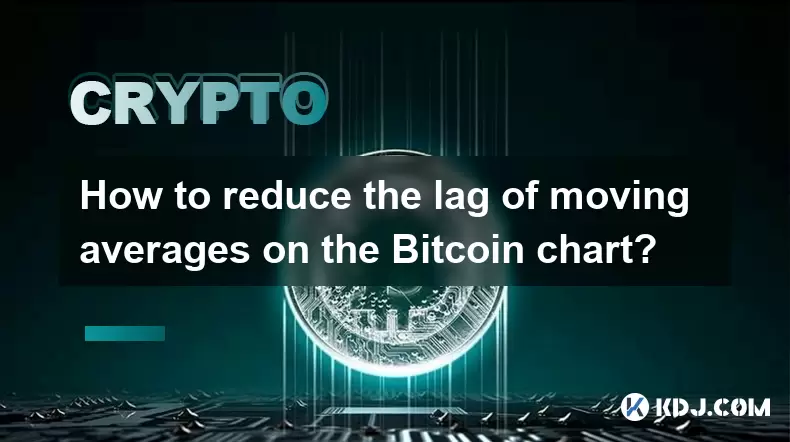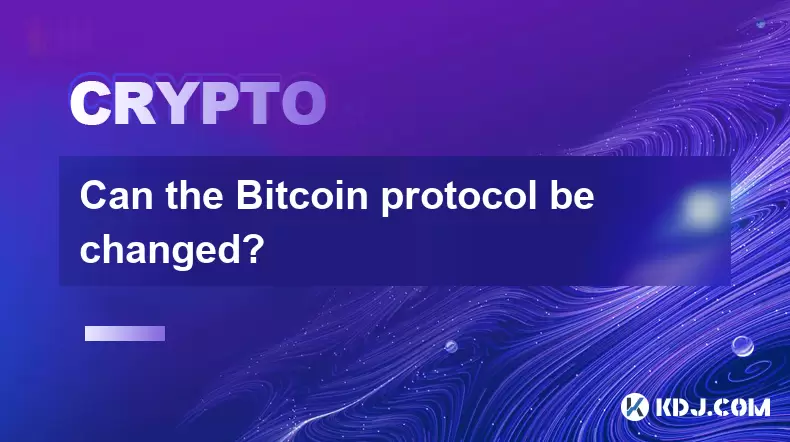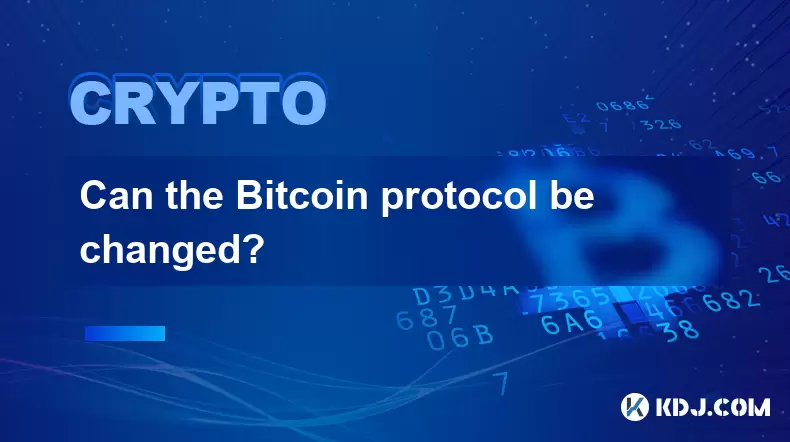-
 bitcoin
bitcoin $122288.232522 USD
0.16% -
 ethereum
ethereum $4480.662914 USD
-0.22% -
 xrp
xrp $2.962747 USD
-2.32% -
 tether
tether $1.000120 USD
-0.05% -
 bnb
bnb $1145.654223 USD
-2.07% -
 solana
solana $227.105217 USD
-1.67% -
 usd-coin
usd-coin $0.999548 USD
-0.02% -
 dogecoin
dogecoin $0.250875 USD
-2.04% -
 tron
tron $0.340654 USD
-0.49% -
 cardano
cardano $0.837968 USD
-2.52% -
 hyperliquid
hyperliquid $48.960449 USD
0.06% -
 chainlink
chainlink $22.049280 USD
-1.33% -
 ethena-usde
ethena-usde $1.000404 USD
0.02% -
 sui
sui $3.586212 USD
0.20% -
 avalanche
avalanche $29.894916 USD
-4.18%
How to reduce the lag of moving averages on the Bitcoin chart?
Bitcoin traders can reduce moving average lag by using EMAs, adaptive MAs, or combining with leading indicators like RSI for faster, more accurate signals.
Jul 06, 2025 at 04:00 pm

Understanding the Lag in Moving Averages
Moving averages are among the most commonly used technical indicators in cryptocurrency trading, especially when analyzing Bitcoin price charts. However, one of the primary drawbacks of using moving averages is their inherent lag, which occurs because these indicators rely on historical data. Since Bitcoin markets can be highly volatile and fast-moving, this lag can cause traders to enter or exit positions too late.
The lag effect becomes more pronounced with longer timeframes. For example, a 200-period moving average (MA) will react much slower to price changes compared to a 10-period MA. This delay happens because the indicator smooths out past prices over a set period, making it inherently reactive rather than predictive.
Selecting the Right Type of Moving Average
Not all moving averages behave the same way in terms of responsiveness. While Simple Moving Averages (SMA) take an equal weight of all periods in the calculation, Exponential Moving Averages (EMA) place more emphasis on recent prices. As a result, EMAs tend to reduce lag compared to SMAs.
- Use EMA instead of SMA for faster reaction to price movements.
- Consider Weighted Moving Averages (WMA), which also prioritize recent data points but in a linear fashion.
- Experiment with different types such as Double Exponential Moving Average (DEMA) or Triple Exponential Moving Average (TEMA), which are designed specifically to minimize lag.
Each type has its own sensitivity level. Traders should backtest various options on Bitcoin charts to see which one aligns best with their trading strategy and market conditions.
Adjusting the Period Length
One straightforward method to reduce lag is to shorten the period length of the moving average. For instance, switching from a 50-period EMA to a 20-period EMA makes the line more responsive to current price action.
However, reducing the period length also increases the risk of false signals and whipsaws, especially in a volatile asset like Bitcoin. Therefore, finding the right balance between responsiveness and reliability is crucial.
- Start by testing shorter EMAs like 9 or 12-period on 1-hour or 4-hour charts.
- Use multiple EMAs together — for example, combining a fast EMA and a slow EMA to confirm trend direction without excessive lag.
- Avoid excessively short periods unless you're scalping and have strict risk management in place.
Incorporating Leading Indicators Alongside MAs
To compensate for the delayed nature of moving averages, many traders combine them with leading indicators that attempt to predict future price movements. These include oscillators like Relative Strength Index (RSI) or Stochastic RSI, which can signal potential reversals before they appear on the moving average lines.
- Use RSI divergence to spot potential trend exhaustion before the moving average reflects a reversal.
- Combine MACD histogram with EMAs to detect momentum shifts early.
- Overlay Ichimoku Cloud components with EMAs to get both trend and momentum insights.
By integrating leading indicators, traders can anticipate moves that the moving averages may only confirm after the fact, thereby mitigating the impact of lag in real-time decision-making.
Applying Adaptive Moving Averages
Adaptive moving averages adjust their sensitivity based on market volatility and trend strength. One popular example is the Kaufman Adaptive Moving Average (KAMA), which uses efficiency ratios to determine how quickly the average should respond to price changes.
- When Bitcoin is trending strongly, KAMA follows price closely.
- During consolidation or choppy markets, KAMA smooths out noise and avoids false signals.
- Other adaptive versions include Variable Index Dynamic Average (VIDYA) and Ehlers Adaptive MMA.
Using adaptive MAs allows traders to dynamically reduce lag depending on current market behavior without manually changing parameters every time the environment shifts.
FAQ: Frequently Asked Questions
Q: Can I eliminate lag completely from moving averages?A: No, lag is an intrinsic characteristic of any moving average since it's calculated using historical price data. However, you can significantly reduce its impact through techniques like using EMAs, adaptive MAs, or combining with leading indicators.
Q: Should I use the same moving average settings across all timeframes?A: No, optimal settings vary depending on the timeframe you're analyzing. Shorter timeframes like 5-minute or 15-minute charts usually require smaller periods (e.g., 9 or 12), while daily or weekly charts often use larger periods (e.g., 50 or 200).
Q: How do I know if my moving average is too sensitive or not sensitive enough?A: If your moving average generates frequent false signals or crosses too often, it's likely too sensitive. Conversely, if it rarely reacts to actual trend changes, it's probably too slow. Backtesting on historical Bitcoin charts helps fine-tune this balance.
Q: Do professional crypto traders still use moving averages despite their lag?A: Yes, many professionals use moving averages as part of a broader strategy. They often combine them with volume analysis, order flow, or machine learning models to offset the lag and improve accuracy.
Disclaimer:info@kdj.com
The information provided is not trading advice. kdj.com does not assume any responsibility for any investments made based on the information provided in this article. Cryptocurrencies are highly volatile and it is highly recommended that you invest with caution after thorough research!
If you believe that the content used on this website infringes your copyright, please contact us immediately (info@kdj.com) and we will delete it promptly.
- BlockDAG, DOGE, HYPE Sponsorship: Crypto Trends Shaping 2025
- 2025-10-01 00:25:13
- Deutsche Börse and Circle: A StableCoin Adoption Powerhouse in Europe
- 2025-10-01 00:25:13
- BlockDAG's Presale Buzz: Is It the Crypto to Watch in October 2025?
- 2025-10-01 00:30:13
- Bitcoin, Crypto, and IQ: When Genius Meets Digital Gold?
- 2025-10-01 00:30:13
- Stablecoins, American Innovation, and Wallet Tokens: The Next Frontier
- 2025-10-01 00:35:12
- NBU, Coins, and Crypto in Ukraine: A New Yorker's Take
- 2025-10-01 00:45:14
Related knowledge

Why is Bitcoin considered a revolutionary technology?
Aug 12,2025 at 08:29pm
Decentralization and the Elimination of Central AuthoritiesThe core innovation behind Bitcoin lies in its decentralized architecture, which fundamenta...

Why is Bitcoin considered a revolutionary technology?
Aug 10,2025 at 07:42pm
Decentralized Architecture and Trustless TransactionsBitcoin is considered revolutionary because it introduced a decentralized architecture that opera...

What are the key features of Bitcoin?
Aug 10,2025 at 02:50am
Decentralization and Peer-to-Peer NetworkOne of the most defining characteristics of Bitcoin is its decentralized nature. Unlike traditional financial...

Can the Bitcoin protocol be changed?
Aug 07,2025 at 01:16pm
Understanding the Bitcoin ProtocolThe Bitcoin protocol is the foundational set of rules that govern how the Bitcoin network operates. It defines every...

Can the Bitcoin protocol be changed?
Aug 11,2025 at 01:01am
Understanding the Bitcoin Protocol StructureThe Bitcoin protocol is the foundational set of rules that govern how the Bitcoin network operates. These ...

What happens to Bitcoin transactions once they are confirmed?
Aug 09,2025 at 05:22am
Understanding Bitcoin Transaction ConfirmationWhen a Bitcoin transaction is initiated, it is broadcast to the network and placed in a pool of unconfir...

Why is Bitcoin considered a revolutionary technology?
Aug 12,2025 at 08:29pm
Decentralization and the Elimination of Central AuthoritiesThe core innovation behind Bitcoin lies in its decentralized architecture, which fundamenta...

Why is Bitcoin considered a revolutionary technology?
Aug 10,2025 at 07:42pm
Decentralized Architecture and Trustless TransactionsBitcoin is considered revolutionary because it introduced a decentralized architecture that opera...

What are the key features of Bitcoin?
Aug 10,2025 at 02:50am
Decentralization and Peer-to-Peer NetworkOne of the most defining characteristics of Bitcoin is its decentralized nature. Unlike traditional financial...

Can the Bitcoin protocol be changed?
Aug 07,2025 at 01:16pm
Understanding the Bitcoin ProtocolThe Bitcoin protocol is the foundational set of rules that govern how the Bitcoin network operates. It defines every...

Can the Bitcoin protocol be changed?
Aug 11,2025 at 01:01am
Understanding the Bitcoin Protocol StructureThe Bitcoin protocol is the foundational set of rules that govern how the Bitcoin network operates. These ...

What happens to Bitcoin transactions once they are confirmed?
Aug 09,2025 at 05:22am
Understanding Bitcoin Transaction ConfirmationWhen a Bitcoin transaction is initiated, it is broadcast to the network and placed in a pool of unconfir...
See all articles










































































